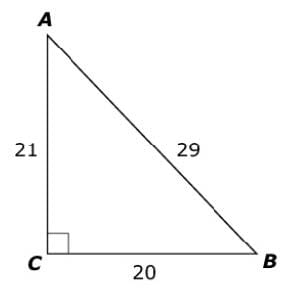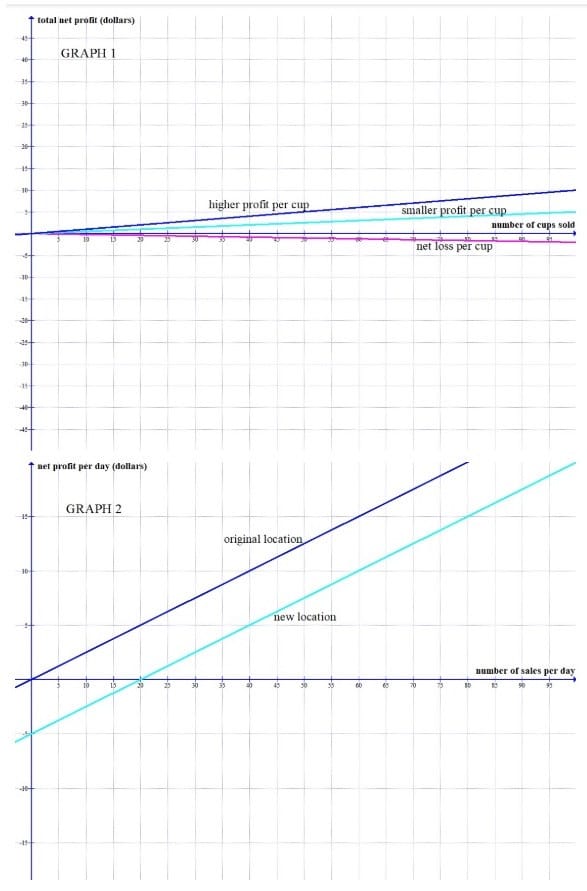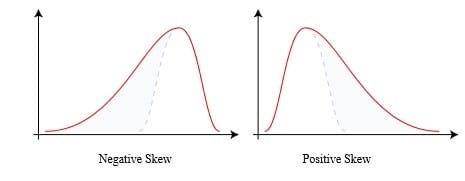SBAC Online Practice Questions and Answers
FILL BLANK
Consider this right triangle.

Enter the ratio equivalent to sin (B).

A. 21/29
These six sentences could form a paragraph. What is the best order to put them in to create an organized, cohesive paragraph?
1.
Western culture has only recently "accepted" tattoos.
2.
Before the 1970s, tattoos were generally reserved for soldiers or sailors, but their popularity has grown over the past few years.
3.
Tattoos are a form of body modification and self-expressive "art."
4.
Now it is common to see tattoos of all shapes and sizes on people from all walks of life.
5.
Many cultures have used tattoos as a rite of passage or to indicate social rank or status for hundreds of years.
6.
Each has its own significance and meaning to the individual person.
A. sentence 3, sentence 5, sentence 1, sentence 2, sentence 4, sentence 6
B. sentence 5, sentence 1, sentence 2, sentence 6, sentence 4, sentence 3
C. sentence 1, sentence 3, sentence 5, sentence 4, sentence 6, sentence 2
D. sentence 4, sentence 6, sentence 5, sentence 1, sentence 3, sentence 2
A student is writing an editorial for the school newspaper about participating in after-school activities. Read the attached excerpt from a draft of the editorial and complete this task:
Choose the transition sentence that would best improve the links between the second and third paragraph.
A. Meanwhile, participating in after-school programs can help students feel like they belong and can build their confidence.
B. In conclusion, participating in an after-school program is a win-win for working parents and lonely students.
C. Another reason attending an after-school program can benefit students and their community is that it gives them a sense of belonging and builds their confidence.
D. On the other hand, students who participate in after-school programs are more likely to have better grades in school and increased participation in their communities.
Which of these expressions is equivalent to 3x2 - 4xy + y2?
A. (3x - y) (x - y)
B. (3x + y) (x - y)
C. (3x + y) (x + y)
D. (3x -y) (x + y)
Aimee plans to open a lemonade stand. She wants to determine whether to sell an 8 ounce or 10 ounce cup of lemonade. Each 8-ounce cup costs 2 cents and 10 ounce cups are 3 cents each. The lemons to make a half-gallon of lemonade cost 5 dollars and the sugar for the half-gallon costs 85 cents. She already has all the materials needed to make the stand and she can use the location at no cost. Aimee notices that about 150 people pass by the location of her stand each day and thinks that 20 percent of these people will buy a cup of lemonade. You have made the 2 accompanying graphs to help Aimee make business decisions.

Read the attached passage and consult the attached graphs.
Juanita has a location where 300 people per day pass by, but wants Aimee to pay $5 per day rent. Assume the same 20% of them will buy, and she is currently selling at a profit of 25 cents per cup. You show Aimee graph 2 to show the potential of the new site, but she thinks the slope of line 2 should be steeper since she is getting more customers. Explain why the slope is correct as shown.
A. Since there are more people each day, she will be using more cups.
B. The amount she makes per cup stays the same no matter how many people come by.
C. Since the new line starts lower the slope decreases to match the original slope.
D. Since she is paying rent, the slope has to decrease to match the original site.
Andrea has a 78 average after taking 7 tests in math class. The 8th and final test is coming up. She needs an average of 80 to get a B in the class. Which statement explains whether or not she can get a B?
A. She can get the B. She needs to get an 82 or better on the last test.
B. She can't get the B. Since she has a C+ average, she cannot get above that on any test.
C. She can get the B. She needs to get a 94 or better on the last test.
D. She can't get the B. She would need to get more than 100 points on the last test.
For the distributions shown in the attached image, which will be the better measure of the center of the data set?

A. mean or median
B. median or mode
C. mean only
D. mode only
Read the text and answer the question.
Moving to the Back of Beyond
When my parents said the three of us were moving out to California, to a place just north of Los Angeles, my mind immediately went to thoughts of Disneyland and Hollywood, glitz and glamour. I imagined a Rodeo Drive shopping spree to
pick out a bikini for the endless days I would be spending on the beach. However, I’d forgotten about my parents’ penchant for the unconventional; they’re definitely “the road less traveled” kind of people. Mom had a gopher snake for a pet
when she was younger, and Dad was never happier than when he was climbing near-vertical cliffs that only mountain goats could love. These are not city folk.
They had chosen to buy a 900-square-foot cabin under a 250-year-old oak tree in the high chaparral1 forest out in the back of beyond – so far away from Los Angeles that you couldn't even see the glow of the lights at night. When I first saw
where we were going to live, I vacillated between feeling terrified and excited. This would be an adventure, for sure. But this was no camping trip where you could go home to civilization after a few days of roughing it; this was home, and
roughing it was the new normal.
On move-in day, we drove fifteen miles out from Antelope Valley – where the nearest grocery store was located – on a two-lane road past llamas, cattle, and horses. Up and up we went, until finally we turned down a dirt road and headed into
a canyon full of towering Coulter pines, blue-green sagebrush, and ancient canyon live oaks. I didn't know the names of these plants then, of course; I learned them later. That first day all I saw then was a million shades of green.
We parked under an oak tree that shaded our cabin and a front yard of rock, sand, and sagebrush twice as large as the cabin itself. On the stone staircase that led to the front door, black lizards interrupted their push-ups to twist their heads
and eye us as we passed. Scrub jays squawked and hummingbirds zoomed past the eaves, scolding us with their territorial calls.
No cars roared past. No radios blared from a neighbor's house. There were no neighbors – no human neighbors, anyway.
Our new home consisted of one bedroom, one bathroom, and one big room for everything else. A fireplace in the corner of the big room would be our sole source of heat in the winter. A swamp box (cooler) would blow a breeze over a big
damp pad to keep us cool all summer, or so my father said. But it was early autumn that day, and the temperature was perfect in the shade of the oak tree. Our oak tree, I thought; I was settling in.
Mom wiped a layer of grime off the kitchen counter and muttered about getting a bottle of bleach on our next trip into town. That was the beginning of an important lesson about living in the back of beyond: you don't just zip over to the local
convenience store anytime you need something out here. You have to make a careful list and check it twice so that you don't forget anything, because anywhere is a long way from here.
On my first walk around the property, I saw two horned toads, a red-tailed hawk, and some deer tracks. I wondered what else I might find deeper and higher in the canyon. Dad told me the real estate agent had mentioned that coyotes,
bobcats, mountain lions, rattlesnakes, and even bears roamed these hills. To my surprise, I found I couldn't wait to see them. All of them. I felt my feet taking root in the earth, claiming this place as home.
With no street lamps timed to turn on at sunset, when night came it was darker than anything I had ever experienced. Mom and I went out to look at the stars while Dad tried to unplug the ancient toilet. In the city, or even in the suburbs where
I had lived before, you could see only the brightest stars in the sky. But out here, it was like being in a planetarium, except there were no labels typed onto our sky. The sheer number and spread of stars was awe-inspiring.
That first night, we slept on air mattresses on the living room floor because the movers had not yet arrived. There were no curtains on the windows, so when the moon rose, it shone in as if moonbeams were an integral part of the cabin.
Eventually, I moved into the bedroom and Mom and Dad got a foldout bed for the living room. Over the next few months, I began to count the passage of time in full moons rather than by the pages of a calendar, and for the first time I really
noticed the days growing shorter in winter and longer in summer.
It's hard to believe, but we’ve been here for six years now. I’ve been going to school in the valley, but I feel most at home up here with my wild fellow canyon dwellers. Soon, I will have to leave home for college, and I’m a little afraid of the
culture shock I’m sure I will feel when I move back to civilization. Soon I’ll be walking on pavement and well-mowed grass again, rooming with strangers, and eating meals in a cafeteria crowded with more people than live within twenty miles
of this house. But I know I will come back. The back of beyond is home now.
1. chaparral: a dense thicket of shrubs and small trees
The following question is divided into two parts. First, answer part A. Then, answer part B.
Part B
Which sentence from the text best supports your answer in part A?
Note: Part A
Q: What is most likely the author's intent by mentioning the “Rodeo Drive shopping spree” in the following paragraph?
When my parents said the three of us were moving out to California, to a place just north of Los Angeles, my mind immediately went to thoughts of Disneyland and Hollywood, glitz and glamour. I imagined a Rodeo Drive shopping spree to pick out a bikini for the endless days I would be spending on the beach. However, I’d forgotten about my parents’ penchant for the unconventional; they’re definitely “the road less traveled” kind of people. Mom has a gopher snake for a pet when she was younger, and Dad was never happier than when he was climbing near-vertical cliffs that only mountain goats could love. These are not city folk.
A:
to contrast the narrator's grand dreams with the sparse life her parent have in mind
A.
"On the stone staircase that led to the front door, black lizards interrupted their push-ups to twist their heads and eye us as we passed."
B.
"Our new home consisted of one bedroom, one bathroom, and one big room for everything else."
C.
"Dad told me the real estate agent had mentioned that coyotes, bobcats, mountain lions, rattlesnakes, and even bears roamed these hills."
D.
"In the city, or even in the suburbs where I had lived before, you could see only the brightest stars in the sky."
